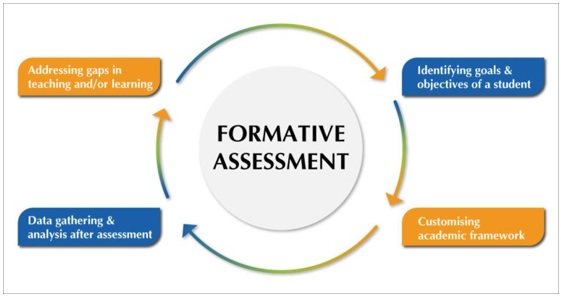
Assessments are a key factor in determining a student's progress however, assessments can't be used in a one-size-fits-all manner. What if you re-examined data through the eyes of stakeholders instead of focusing on school or district test results that reveal ‘gaps’ in student performance when considering effective assessment techniques for multilingual learners? To establish multilingual learners as your primary stakeholders and to set the stage for analyzing assessment results, here are a few things you should keep in mind. This post strives to give educators new or seasoned useful ideas, advice, activities, and materials that they can use right away in the classroom. Now let's get started and investigate some cutting-edge and effective evaluation techniques.
5 Ways Assessments And Feedback Can Help Your ESL Students

Here are a few classroom methods and techniques that work well for ESL students in a classroom:
1. Performance Assessments
Written abilities are more frequently tested on standardized exams than spoken abilities. Presenting ELL students with opportunities to practice their oral communication skills is one approach to tracking their development. Additionally, this may lessen the exam anxiety that ELL children frequently encounter on standardized assessments.
Depending on the subject matter and abilities being evaluated, a variety of tasks may be included in performance-based examinations. Role-playing, interviews, oral reports, text summaries, narrative retelling, brainstorming, and dialogue completion are a few examples of performance assessments. Since students who perform together are encouraged to learn from one another's errors and accomplishments, performance assessments may also serve as a learning tool.
2. Gamification
The idea of gamification is becoming more and more common in education nowadays. The application of game components in non-gaming situations, such as the classroom, is known as "gamification." While gamified learning is the main focus of many recommendations for gaming in ESL classrooms, some research indicates that gaming may also be beneficial for assessment, especially if the game has elements like leaderboards that track players' progress in low-stakes situations.
Gamification of assessments need not be done digitally. Simple games like charades, scavenger hunts, or Pictionary-style competitions can be played. These kinds of games are excellent for testing vocabulary, ideas, and even mathematics abilities.
3. Portfolios
Portfolio evaluations help students who are learning many languages by giving them the chance to compile real proof of their comprehension. According to concepts in second language writing research, portfolios can divide the writing process by language and subject to better engage English language learners, as Professor Kevin Wong explains in an article for Edutopia. This greatly reduces the intimidating nature of writing and helps students become more conscious of their writing growth.
A student's portfolio may contain a variety of materials, such as checklists, evaluation sheets, recordings of their performances, and samples of their work. Although the materials included in a portfolio vary depending on what is being assessed, Dr. Wong advises students to actively participate in goal-setting for their portfolios, which will assist them with monitoring their goals and encouraging reflection on their work.
4. Conferences
Students can explain and discuss what they have learned in conferences with one another. Teachers can also respond to inquiries from students with genuine, in-the-moment comments during conferences.
When you work with students who are learning language and learning to become stronger readers, it's important to confer more frequently than usual. The more one-on-one or small-group time ELLs can spend with their instructor, the better.
5. Rubrics
Regardless of the formal or informal evaluation methods you use, using rubrics to set uniform standards for grading and feedback is a useful strategy. This is especially important for ELL students since rubrics let teachers concentrate just on the most important learning objectives and disregard everything else.
Additionally, rubrics give students and teachers a means of exchanging comments on their work and empowering the latter to take responsibility for their learning.
6. Offering Constructive Feedback
A crucial component of evaluation is feedback, which educates students about their development and inspires them to do better. Feedback needs to be practical, detailed, and helpful to be successful. Comment on strengths and offer areas for growth rather than just assigning a grade or noting mistakes.
Furthermore, your goal with higher-level teenagers and adults should be to include them in the evaluation process by having them self-evaluate and seek feedback from their peers. This encourages a reflective mentality and gives students the ability to take charge of their education. Students should be encouraged to evaluate their performance, make objectives, and work on the feedback received.
Assess Your Students Progress Better
In ESL instruction, assessments are essential because they allow teachers to monitor their students' progress, pinpoint areas in need of development, and adjust their lesson plans appropriately. You may establish a rich and engaging assessment environment that fosters student growth and achievement by implementing the ideas and practices that have been outlined. Additionally, you can always pursue Online and Live Online TEFL Programs to be aware of the TEFL methodologies and techniques to handle your classes better.
We believe education should be accessible for everyone. That’s why we don’t charge for our blogs. Find the right course that will help you in your career with us, contact us at - 8000180858. You can mail us at act@asiancollegeofteachers.com.